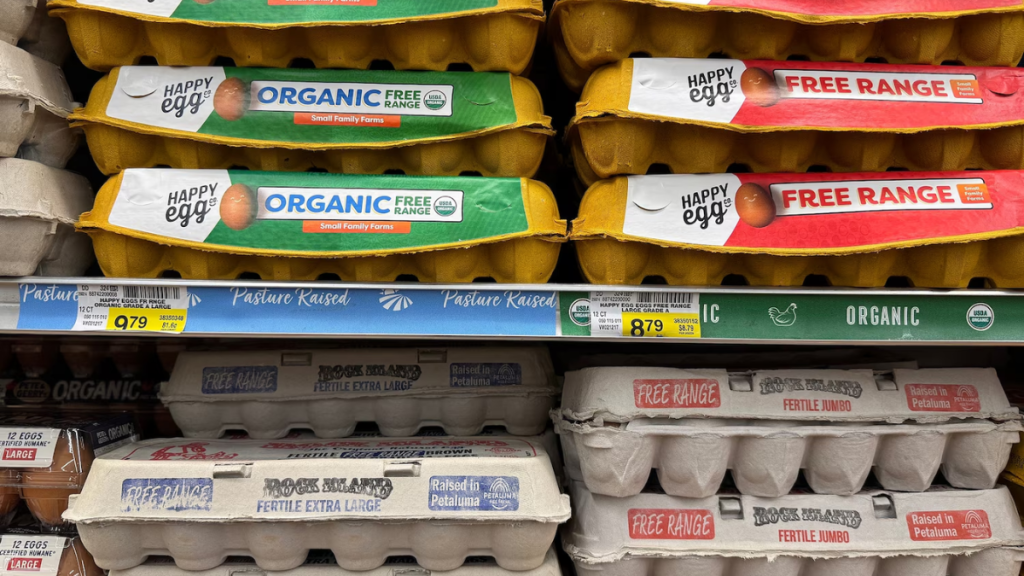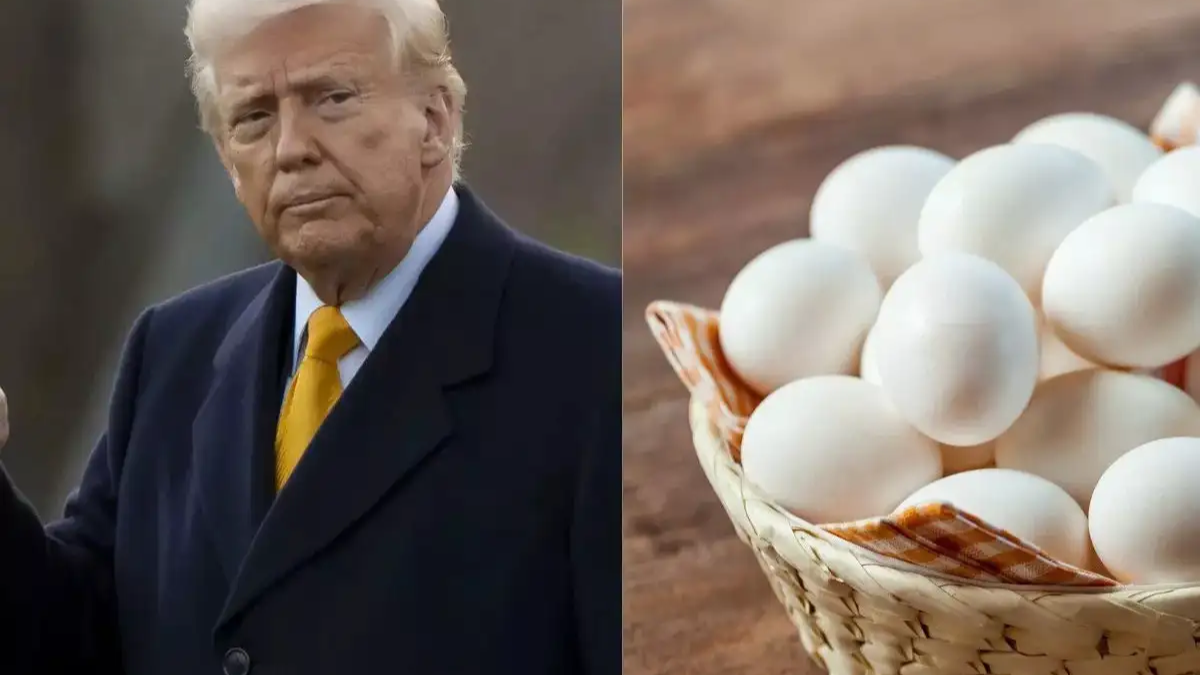WASHINGTON, D.C. — For months, former President Donald Trump maintained that egg prices were on the decline. While his assertion was widely challenged at the time, current government data shows that egg prices have, in fact, fallen—though not due to the reasons Trump suggested.
Instead, analysts point to economic corrections and a waning avian flu outbreak as the key drivers behind the change.
Egg Prices See Steepest Drop in Four Decades
Recent figures from the U.S. Bureau of Labor Statistics (BLS) confirm a significant decrease in the price of eggs across the country. In April 2025, the average price for a dozen Grade A eggs dropped to $5.12, a sharp fall from $6.23 in March. This 12.7% drop marks the most substantial month-to-month price decline since March 1984.
Despite this drop, prices are still well above what consumers were paying a year ago. In April 2024, the average price for a dozen eggs was around $2.86. That puts current prices nearly 79% higher than they were at the same time last year.
The dramatic rise in egg prices over the past year had been one of the more visible signs of food inflation for American consumers. Grocery shoppers across the country voiced frustration over escalating costs, and eggs became a symbol in the political debate over the state of the economy.
Avian Flu Devastated Supply Chain
The egg industry has been severely impacted by the ongoing outbreak of highly pathogenic avian influenza (HPAI), which began in early 2022. The virus led to the culling of over 169 million birds, many of them egg-laying hens. This decimated flocks and drastically reduced the egg supply, which in turn led to higher prices.
According to the U.S. Department of Agriculture (USDA), April 2025 showed encouraging signs of containment, with only three reported outbreaks, a significant decline from 59 outbreaks in February. This reduction has allowed egg producers to gradually rebuild flocks and stabilize supply.
Experts say the improving conditions on farms—along with seasonal factors such as decreased demand after the Easter holiday—are key reasons for the recent price reduction.
Trump’s Claims and Political Messaging
During various public appearances and social media posts, Donald Trump asserted that egg prices were declining under what he characterized as the lingering effects of his policies. At a rally in March, Trump claimed, “Egg prices are down. That’s because we built the greatest economy the world has ever seen.”
However, economists and food supply experts largely disagree with Trump’s framing. While prices have begun to drop, this trend is primarily being driven by market correction after a supply shock—not by specific policy decisions made during his administration or afterward.
David Ortega, an agricultural economist at Michigan State University, noted, “We are seeing prices decline because producers are recovering from the avian flu. It’s a natural market response, not a political one.”

Industry Under Federal Investigation
The recent price volatility has brought renewed scrutiny to the U.S. egg industry. Cal-Maine Foods, the largest egg producer in the country, has faced criticism for record profits amid soaring retail prices. In 2024, the company reported over $300 million in profit for just one quarter, sparking accusations of price gouging.
In response, the U.S. Department of Justice (DOJ) launched an investigation into possible price-fixing and collusion among major egg producers. Lawmakers, particularly on the Senate Judiciary Committee, have called for accountability and greater transparency in how food prices are set.
The investigation is ongoing, and no charges have been filed yet. However, the scrutiny has intensified pressure on the egg industry to justify pricing practices during a time of public frustration over inflation.
What It Means for Consumers
The sharp decrease in egg prices comes as a welcome relief to many American households still grappling with elevated food costs. Eggs are a staple in most kitchens and are often used as a price benchmark for overall grocery affordability.
While consumers may see continued easing in prices over the next few months, economists warn that volatility may persist due to lingering supply chain vulnerabilities. Additionally, the rebuilding of the nation’s poultry flocks takes time, and unexpected outbreaks could still trigger new spikes in cost.
The USDA forecasts that egg prices may continue to decrease modestly through the summer, depending on demand patterns and disease control efforts. Seasonal slowdowns in consumer egg purchases after spring also typically contribute to downward pressure on prices.
Conclusion
Though President Trump’s claims about falling egg prices were initially viewed as premature or misleading, the data now shows that prices have indeed dropped—albeit for reasons unrelated to political policy. Market dynamics, supply recovery following a historic avian flu outbreak, and seasonality are all playing larger roles.
This episode serves as a reminder that food pricing is often driven by complex, interrelated factors including disease, demand cycles, supply infrastructure, and global economics—not solely by political decisions.
As the market continues to stabilize, consumers will likely benefit from greater affordability in one of the most essential grocery staples.
For more detailed information on egg prices and agricultural market trends, visit the U.S. Department of Agriculture’s Egg Market Overview.
Disclaimer – Our team has carefully fact-checked this article to make sure it’s accurate and free from any misinformation. We’re dedicated to keeping our content honest and reliable for our readers.
